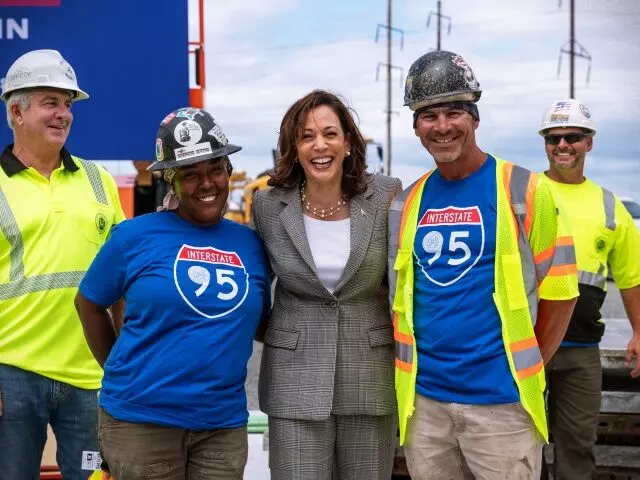Vice President Kamala Harris had promised to lead the most pro-union administration in American history, but since then union membership among employed Americans has fallen to record lows. Union membership in both public and private sectors is at its lowest percentage of the workforce ever recorded. In 1955, more than one in three American workers were represented by a union; however, by 2023 only one in ten American workers belonged to a union. Even lower, only six percent of Americans in the private sector are represented by a union. This record low in union membership comes even as seven in ten Americans say they support unions. While both Vice President Kamala Harris and former President Donald Trump have made promises to union workers, it is clear that their methods for supporting workers differ greatly.
Trump and his running mate, Sen. JD Vance (R-OH), are focused on reducing the influx of foreign labor in the American marketplace. They argue that this will help increase wages for Americans by creating a tighter labor market where employers must offer higher pay to attract workers. In contrast, Harris’ policy initiatives include releasing migrants at the United States-Mexico border with work permits so they can immediately begin taking working and blue-collar jobs. Furthermore, she has outlined plans to give amnesty to most of the 11 to 22 million illegal aliens living across the United States, which would legalize millions of undocumented workers and allow them to enter the American workforce legally.
Labor market research has shown that mass immigration can undermine the bargaining power of unions. The late Vernon Briggs Jr., a labor economist at Cornell University, testified to Congress in 2007 about the impact of mass immigration on union membership. He stated that while mass immigration is not the only explanation for the decline in union membership, it is one of the key factors because a large component of the total flow are illegal immigrants. As of 2022, more than 30 million legal immigrants and illegal aliens were holding American jobs, which marks a 20-percent increase over the last 15 years. In comparison, over that same period, the number of native-born Americans added to the United States workforce has increased by less than 10 percent.
The difference between Trump and Vance’s approach to supporting American workers and Harris’ policies highlights a significant divide in the parties’ perspectives on labor unions and immigration. While both candidates pledge support for union workers, their strategies for achieving that goal differ significantly. Ultimately, it remains to be seen which approach will have a more substantial impact on union membership and the bargaining power of American workers moving forward.

